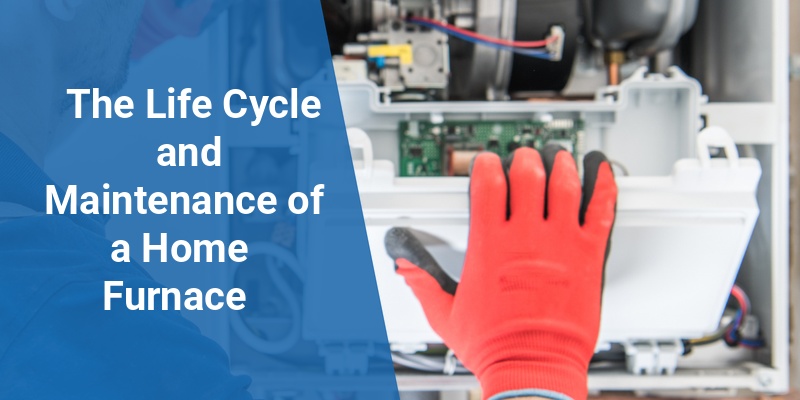The furnace is a critical component of American homes, providing essential heating during cold months. Understanding the life cycle of a furnace and how proper maintenance can extend its usefulness is vital for homeowners seeking efficiency, safety, and cost savings. This article explores how a furnace works, its typical lifespan, signs of aging or inefficiency, and tips to maximize durability and performance.
| Furnace Stage | Typical Duration | Main Considerations |
|---|---|---|
| Installation | 1 Day | Proper sizing and professional setup critical for performance |
| Operational Life | 15-25 Years | Regular maintenance needed to preserve efficiency and safety |
| Maintenance | Seasonal to Annually | Filter changes, cleaning, inspection of components |
| Replacement | After 15-25 Years | Signs of wear, inefficiency, or frequent breakdowns trigger replacement |
How a Furnace Works in American Homes
A furnace heats air using fuel energy—usually natural gas, electricity, propane, or oil—and distributes this warm air through ducts to rooms. The thermostat signals the furnace to start, activating the burner or heating element. A blower then circulates heated air throughout the house while cooler air returns to the furnace for reheating.
This cyclical process provides consistent warmth. Modern furnaces incorporate safety features and efficiency improvements, such as sealed combustion chambers and variable speed blowers, to prevent heat loss and reduce energy consumption.
Typical Lifespan of a Furnace
The average furnace lasts between 15 and 25 years, depending on type, usage intensity, and maintenance quality. Gas furnaces typically last around 18-20 years, while electric furnaces may exceed 25 years due to fewer mechanical parts.
Factors influencing furnace longevity include installation quality, frequency of use, and environmental conditions like humidity and dust. Regular maintenance can increase lifespan by preventing premature failure of components like heat exchangers, burners, and blowers.
Signs Your Furnace May Be Nearing the End of its Life
Homeowners should recognize certain warning signs of furnace aging or malfunction to avoid unexpected breakdowns. Key indicators include:
- Rising Energy Bills: Older furnaces often operate less efficiently, increasing utility costs.
- Frequent Repairs: Recurring breakdowns can signal that major components are failing.
- Uneven Heating: Rooms may heat inconsistently due to airflow problems or worn parts.
- Unusual Noises: Knocking, banging, or rattling sounds can indicate mechanical issues.
- Yellow Burner Flame: Indicates incomplete combustion, a safety risk requiring immediate attention.
Regular Furnace Maintenance Best Practices
To extend the life of a furnace and maintain optimum performance, homeowners should perform or schedule regular maintenance. Essential tasks include:
Call 888-906-9139 for Free Local HVAC Quotes – No Obligation, Just Savings!
- Replace Air Filters: Changing filters every 1-3 months keeps air clean and airflow unrestricted.
- Inspect and Clean Heat Exchanger: Removes soot and checks for cracks that could leak carbon monoxide.
- Check Thermostat Accuracy: Proper calibration ensures the furnace runs efficiently without overuse.
- Clean Burners and Blower Components: Ensures stable ignition and consistent airflow.
- Inspect Wiring and Electrical Connections: Prevents shorts and potential fire hazards.
Most HVAC professionals recommend servicing your furnace before the heating season begins, ideally every year.
When to Consider Furnace Replacement Instead of Repair
Although repairs can be cost-effective for minor issues, replacement becomes more economical when the furnace is older or experiencing major problems. Consider replacement if:
- The furnace is over 20 years old with recurring repairs.
- Heat exchanger has developed cracks, posing carbon monoxide risks.
- Energy bills rise despite repairs and filter replacements.
- The furnace fails to heat the home adequately or produces excessive noise.
Upgrading to a new high-efficiency model can reduce energy consumption by up to 30% and improve home comfort.
Choosing the Right Furnace for Your Home
When selecting a new furnace, homeowners should consider:
- Fuel Type: Availability and cost-effectiveness of gas, electric, oil, or propane.
- Efficiency Ratings: Look for Energy Star certified units with high AFUE percentages (above 90%).
- Size and Capacity: Proper sizing ensures efficient heating without unnecessary strain.
- Additional Features: Variable speed blowers, modulating gas valves, and advanced filtration enhance performance.
Environmental and Cost Benefits of Modern Furnaces
Newer furnaces are designed to reduce carbon footprint, using less fuel while maintaining or increasing warmth. High-efficiency condensing furnaces recover heat from exhaust gases, significantly cutting emissions.
While upfront costs may be higher, energy savings and potential government rebates make upgrading financially prudent in the long run. Efficient furnaces also improve indoor air quality by reducing pollutants and maintaining steady humidity levels.
Safety Concerns and Carbon Monoxide Awareness
Furnaces must be serviced regularly to prevent dangerous conditions. Cracked heat exchangers or ventilation failures can lead to carbon monoxide leaks, an odorless and lethal gas. Installing carbon monoxide detectors near the furnace and living areas is a critical safety step.
Call 888-906-9139 for Free Local HVAC Quotes – No Obligation, Just Savings!
Professional inspections should include combustion analysis to confirm safe operation. Signs of possible CO leaks include headaches, nausea, dizziness, or flu-like symptoms among household members.
Energy Efficiency and Annual Cost Considerations
| Furnace Type | Average AFUE (%) | Annual Fuel Cost Estimate |
|---|---|---|
| Standard Gas Furnace | 80-85 | $800 – $1,200 |
| High-Efficiency Gas Furnace | 90-98 | $600 – $900 |
| Electric Furnace | 95-100 | $1,200 – $1,800 |
Efficiency improvements can translate into substantial yearly savings especially in colder climates with heavy furnace use.
DIY Furnace Maintenance Tips for Homeowners
Homeowners can perform simple tasks safely to keep their furnace running smoothly:
- Replace or clean air filters regularly.
- Keep the furnace area clean and free of debris.
- Check the thermostat batteries and settings.
- Listen for unusual noises during furnace operation.
- Schedule professional inspections annually.
These proactive steps help catch problems early and extend furnace life.
